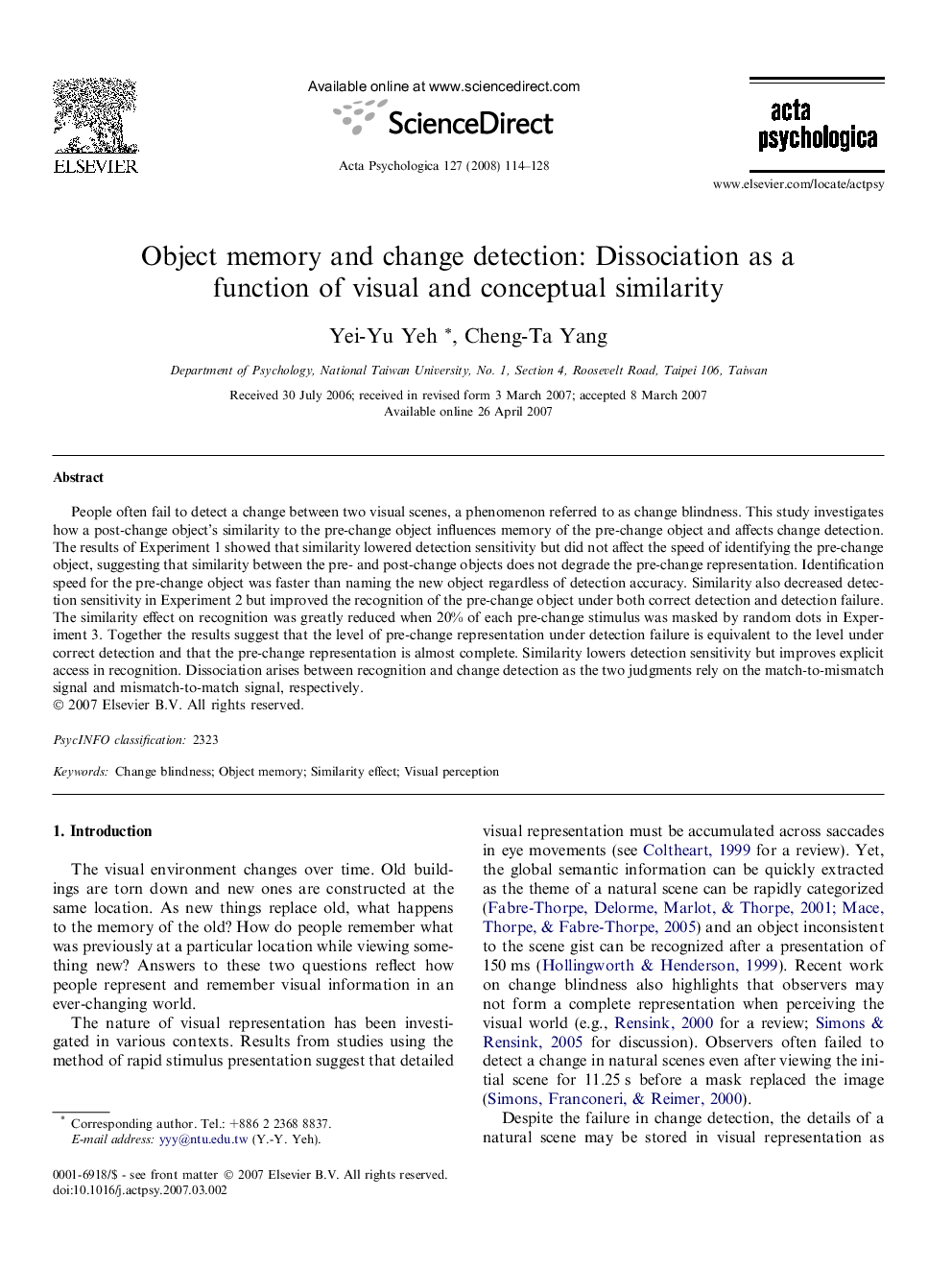| Article ID | Journal | Published Year | Pages | File Type |
|---|---|---|---|---|
| 920553 | Acta Psychologica | 2008 | 15 Pages |
People often fail to detect a change between two visual scenes, a phenomenon referred to as change blindness. This study investigates how a post-change object’s similarity to the pre-change object influences memory of the pre-change object and affects change detection. The results of Experiment 1 showed that similarity lowered detection sensitivity but did not affect the speed of identifying the pre-change object, suggesting that similarity between the pre- and post-change objects does not degrade the pre-change representation. Identification speed for the pre-change object was faster than naming the new object regardless of detection accuracy. Similarity also decreased detection sensitivity in Experiment 2 but improved the recognition of the pre-change object under both correct detection and detection failure. The similarity effect on recognition was greatly reduced when 20% of each pre-change stimulus was masked by random dots in Experiment 3. Together the results suggest that the level of pre-change representation under detection failure is equivalent to the level under correct detection and that the pre-change representation is almost complete. Similarity lowers detection sensitivity but improves explicit access in recognition. Dissociation arises between recognition and change detection as the two judgments rely on the match-to-mismatch signal and mismatch-to-match signal, respectively.
